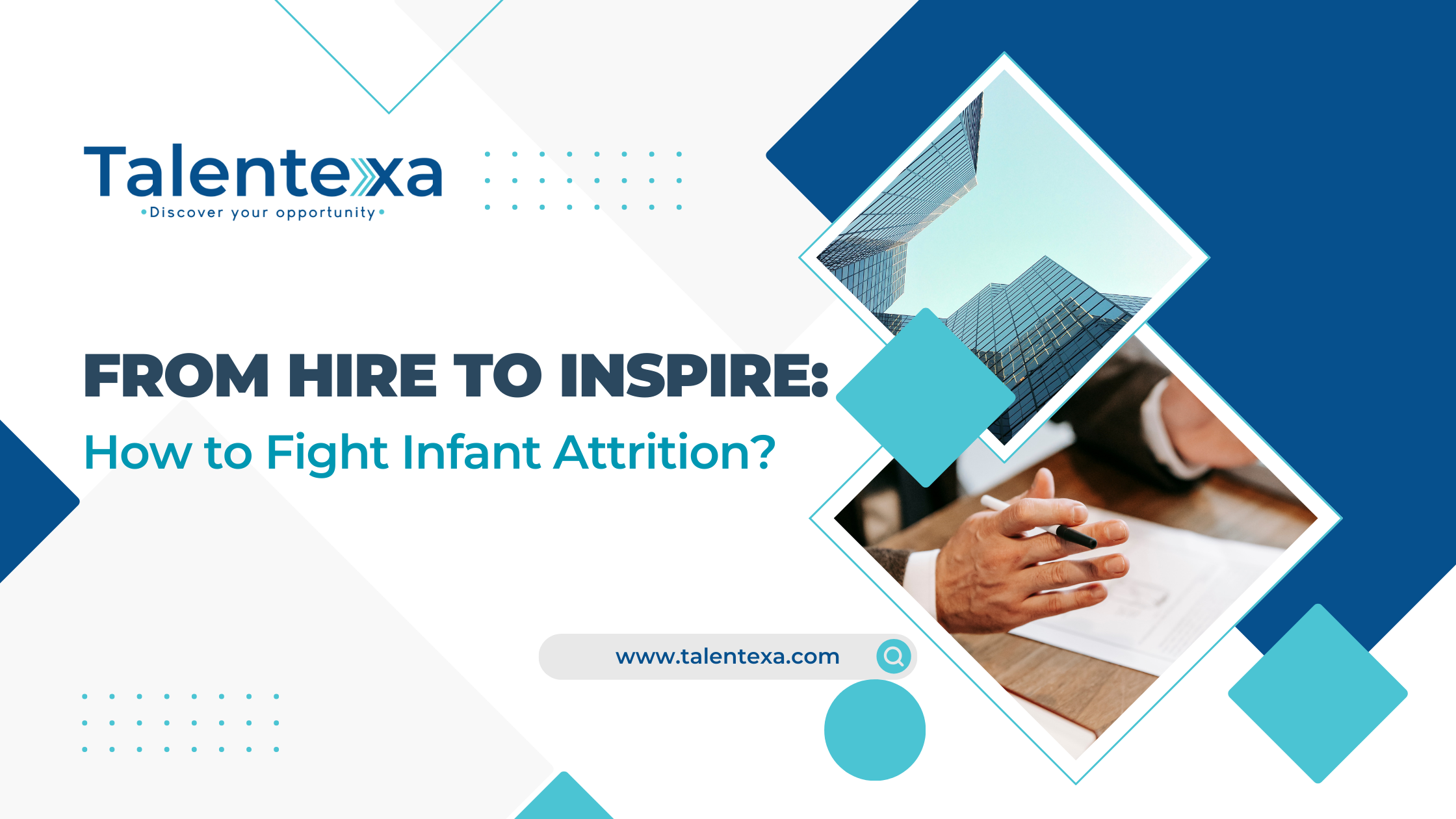Talent acquisition is just the beginning. Retaining that talent, especially new hires, is equally important. One of the significant challenges organizations face is infant attrition, the phenomenon where new employees leave the organization within the initial period of their employment.
What is Infant Attrition?
Infant attrition can be a costly issue for businesses. The resources invested in hiring, onboarding, and training new employees are lost when they leave prematurely. Moreover, frequent turnover can damage team morale and disrupt workflow, further impacting productivity. To effectively combat this issue, we need to understand the underlying causes and implement targeted strategies to improve retention.
Causes of Infant Attrition
- Mismatch of expectations: Often, there is a significant gap between what new hires expect and what the job actually entails. This can stem from misleading job descriptions or a lack of clear communication during the interview process.
- Poor onboarding experience: The initial days and weeks at a new job are crucial. A poor onboarding experience can leave new hires feeling unsupported and disconnected from the company culture.
- Lack of career development opportunities: New employees, especially millennials and Gen Z, value career growth and development. If they perceive a lack of opportunities to advance, they are likely to look elsewhere.
- Work-life balance issues: Employees today prioritize a healthy work-life balance. Companies that fail to support this balance may see higher attrition rates.
- Cultural misalignment: A mismatch between the company culture and the employee’s value can lead to dissatisfaction and early exit.
Strategies to reduce Infant Attrition
- Transparent hiring practices: Ensure that job descriptions accurately reflect the role and responsibilities. During interviews, provide a realistic preview of the job to align candidate expectations with reality.
- Effective onboarding programs: Design comprehensive onboarding programs that include orientation, training, and mentorship. A well-structured onboarding process can help new hires feel welcomed and integrated into the team.
- Continuous feedback and support: Establish regular check-ins between new hires and their managers. This allows for early identification of issues and provides a platform for continuous feedback and support.
- Career development programs: Offer clear career progression paths and opportunities for skill development. This can include training programs, workshops, and mentoring schemes.
- Promote work-life balance: Implement policies that support work-life balance, such as flexible working hours, remote work options, and wellness programs.
- Cultural fit assessments: During the hiring process, assess candidates for cultural fit as well as technical skills. This ensures alignment between the employee value and the company culture.
Conclusion:
Reducing infant attrition requires a holistic approach that addresses various aspects of the employee experience. By fostering a supportive and engaging work environment, companies can not only retain their new hires but also build a committed and motivated workforce.
At Talentexa, we are committed to help organizations develop strategies that not only attract but also retain top talent, ensuring sustainable workforce development.
“Are you looking to find the right talent for your organization or looking for your next career opportunity, we are here for you.”
Hire Talent: https://talentexa.com/hire-candidates/
Apply for Job: https://talentexa.com/job-seeker-apply/
OR
Connect with us directly:
Email: info@talentexa.com
Website: www.talentexa.com
Tel: +91 8147 047 420


